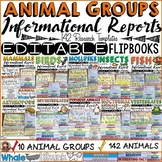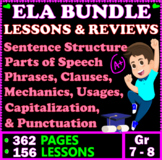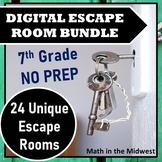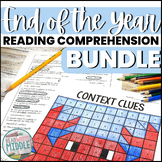35 results
7th grade chemistry resources for Montessori
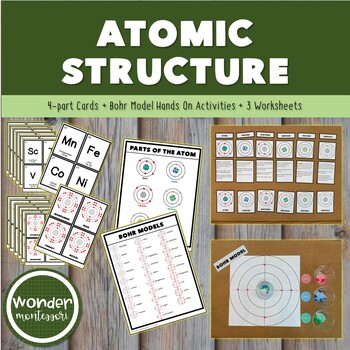
Atomic Structure Montessori Cards, Bohr Model, and Activities
Atomic Structure Montessori Cards, Bohr Model, and ActivitiesLooking for a great way to bring together art and ELA in your classroom? This DIY postcard set is a quick and easy eay to accomplish that. Just print, cut, and go!This download includes a huge assortment of activities for Upper Elementary aged students. These can be done as lessons, or students may work through on their own or in small groups.- 4-part cards address parts of an atom: proton, neutron, electron, nucleus, orbital, and a
Subjects:
Grades:
4th - 8th
Types:

Molecule model 3 part cards
Montessori 3 part cards to support the universe curriculum i.e Bohr's board.
Subjects:
Grades:
2nd - 8th
Types:
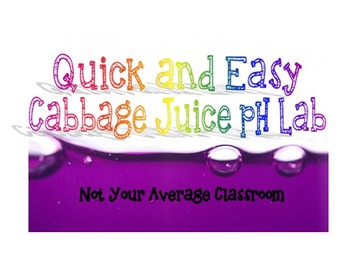
Quick and Easy Cabbage Juice pH Indicator Lab
This activity results in impressive color changes and is really fun to do! Students will use cabbage juice to test various substances for acidity or alkalinity. Purple cabbage juice turns bright pink for acids and bright blue for bases. This lab lists vinegar, tap water, baking soda solution, lemon/lime soda, and bleach solution - but you can easily convert the file to a word document and edit as needed.
This is a completely qualitative lab, and it is meant to be done in very little time. The ac
Subjects:
Grades:
5th - 12th
Types:
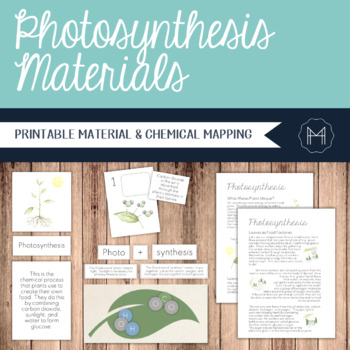
Photosynthesis Materials - Passage, Nomenclature, Sequencing & Chemistry
Botany is one of the quintessential components of a Montessori education. It goes beyond simply understanding the processes of nature and encourages children to value and advocate for our Earth. By witnessing the intricacies of the inner workings of a leaf, a child is far more likely to appreciate and respect the plant and encourages others to do the same. ContentsPgs. 2-4: Photosynthesis Reading Passage (810-1100 Lexile)Pg. 5: The Leaf as a Factory PosterPgs. 6-8: Photosynthesis 3-Part CardsPgs
Subjects:
Grades:
3rd - 7th

Hands-on Interactive Volcano Bundle Study: Types, Formation and Famous Volcanos
Create a science experiment of a real "erupting" volcano with a 3D model and step by step instructions. Learn about how volcanos form with a illustrated poster and learn about volcanos around the world with full color cards.*Photos may include completed items or display items not included. Please note this is ONLY for the digital copies of the resources used.
Subjects:
Grades:
PreK - 8th
Types:

LAB Chemistry Density of Pennies - with Graphing & Demos
Engage your chemistry students by having them determine the composition of pennies as it changed over time. Students will chart & graph their results. After, you can demonstrate and prove that pennies are made of zinc internally.Included:3 page Student worksheet with procedure, chart, graph & analysis questions1 page teacher density demonstrations (5 easy options)Materials: pennies 13 pre 1982 & 13 post 1982 (per group or 1 set every two groups & switch pennies)graduated cylinder
Subjects:
Grades:
4th - 12th, Higher Education
Types:
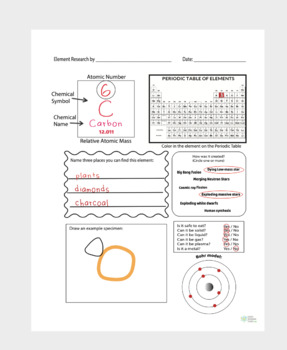
Element Research Portfolio
Everything your students need to make research portfolios all about the elements. Includes a cover page to decorate and a double-sided worksheet to guide research (I listed our favorite books and free websites) as well as a periodic table that shows where the elements come from to make completion simple and straight-forward. Use the included blue-lined, Montessori style paper to write favorite facts (or use your own paper style if preferred). Makes for wonderful student-lead learning & Mont
Subjects:
Grades:
1st - 9th
Types:
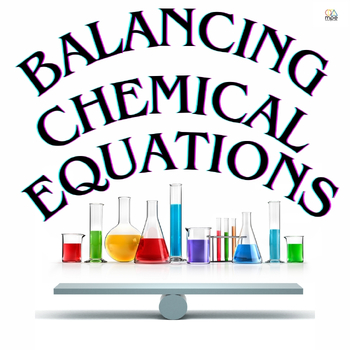
Balancing Chemical Equations
Introduction: Balancing chemical equations is a crucial skill in chemistry that involves adjusting the coefficients of reactants and products in a chemical equation to ensure that the number of atoms of each element on both sides of the equation is equal. This process is essential in understanding chemical reactions and predicting the outcome of a reaction. Balancing chemical equations is also helpful in real-life scenarios, such as industrial processes involving chemical reactions or environmen
Subjects:
Grades:
5th - 8th
Types:
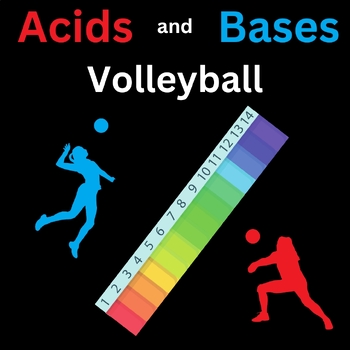
Acids and Bases Volleyball
What makes something acidic or basic? It all comes down to hydrogen. When we measure the acidity of alkalinity, we use the pH scale, which literally stands for the "potential of hydrogen." When we dissolve acids in water, we create excess hydrogen ions that are positively charged (H+). These hydrogen ions bind to water (H2O) to create hydronium (H3O+). The more hydronium present in the solution, the more acidic it is. Conversely, when we dissolve bases in water, we create excess negatively char
Subjects:
Grades:
5th - 8th
Types:
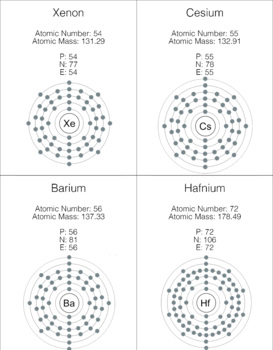
Elements of the Periodic Table Electron Orbitals
Element cards with electron orbitals, number of protons, neutrons, and electrons, name of elements, and element symbol. Use these cards to further explore atoms, subatomic particles, and elements of the periodic table.These are not three part cards, but can easily be made into three part cards by cutting the name off the top.
Subjects:
Grades:
1st - 10th

Properties of Matter Sorting / Classification Cards, with Definitions
These sorting cards provide a fun, hands-on activity to help students practice their understanding of the properties of matter. Students match a definition card to each label heading, then check their answers. Next, they sort the cards below the headings, determining whether each property of matter is an extensive physical property, an intensive physical property, or a chemical property of matter. The set includes category labels, definition cards for matching to the labels, error control car
Subjects:
Grades:
5th - 9th
Types:
NGSS:
5-PS1-3

Parts of a Plant Cell 3 Part Cards Montessori Nomenclature Botany
Montessori's Classified Cards are well-known and loved because they are a great way to help your child learn to read. This resource is included in Zoology Unit 1: Basic Introduction to Living Organisms - click here for that resource.⭐⭐⭐3-Part Cards Parts of a Plant Cell Montessori⭐⭐⭐Save yourself hours of work. All you have to do is download the PDF, cut out the cards and labels, and you are all ready to go! The following is included:16 pictures with labels in type font (approximately 3½ x 3¼) 1
Grades:
1st - 9th
NGSS:
MS-LS1-2
Also included in: Living Nonliving Bundle eLearning and Printables Montessori Zoology
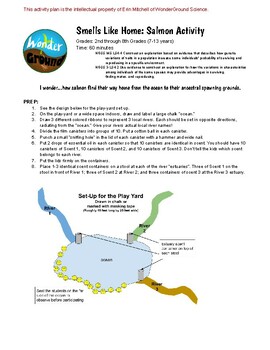
Salmon: Smells Like Home
Another engaging activity by WonderGround Science! In this activity, students will become anadromous fish, navigating their way to their ancestral spawning grounds. The activity includes 7 deep-thinking questions for students to discuss, regarding water quality, turbidity, and other factors that might hinder chemical cues that salmon use to navigate. Materials are found in a typical classroom.
Subjects:
Grades:
2nd - 8th
Types:
NGSS:
3-LS4-3
, 3-LS4-2
, 3-LS4-4
, MS-LS4-4
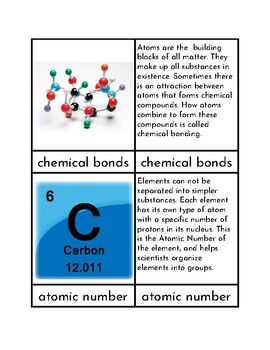
Chemical Bonds - Three/Four Part Cards
This PDF can be used to create a set of three or four part cards to teach children about basic Chemical Bonds. There is a picture card, word card, a picture and word card (control), and description card for each of the following terms: chemical bonds, atomic number, electron shells, outer shells, valence electrons, covalent bonds, and ionic bonds. Be sure to check out my FREEBIE: Parts of an Atom - Three/Four Part Cards!! Cards should be printed onto card stock, cut, and laminated.
Subjects:
Grades:
3rd - 8th
Types:
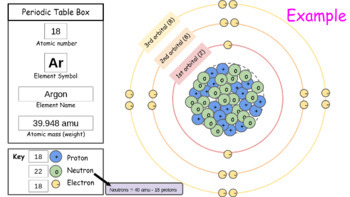
Challenge: Model an Atom from the Periodic Table (Classroom or Remote Learning)
Assign a copy of this google slide show to students. They can work alone, in pairs, or small groups. Challenge students to model an atom of more than one element. Copy and paste the key symbols to create an atom model. Students will use their knowledge of the periodic table to figure out the correct amount of protons, neutrons, and electrons for an atom of their choice. If you want students to model multiple elements, then simply copy and paste the blank template a few more times before assignin
Subjects:
Grades:
6th - 10th
Types:
NGSS:
HS-PS1-1
, MS-PS1-1
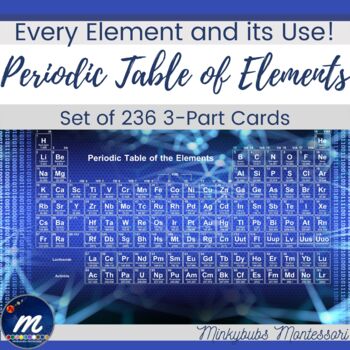
Periodic Table of Elements 3-Part Cards with Common Uses
The Periodic Table of Elements and Common Places they are found cards are an awesome and hands-on way for children to explore the various types of metals, and nonmetals of the 118 elements of the periodic table. Each of the 118 elements has a 3-part card of the element itself and a 3-part card of the place it can be found. Gorgeous high-quality photos on every element card invite the child to explore the element in details. There are 244 pages in this resource - save yourself hours.Each of the 1
Subjects:
Grades:
4th - 8th
NGSS:
HS-PS1-1
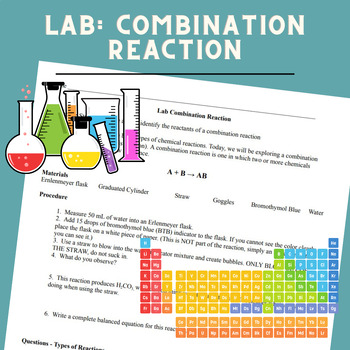
LAB Chemistry - Easy Combination Reaction
Engage your chemistry students by having them perform a quick combination reaction, with a fun color change. This gets students up and moving with easy setup & safety measures. They will write out a full equation for the reaction observed (problem solving) as well as a quick balancing practice.Objective: Observe and predict the reactants of a combination reactionMaterials:Erlenmeyer flaskGraduated CylinderStrawBTB (bromothymol blue) Water
Subjects:
Grades:
7th - 12th, Higher Education
Types:
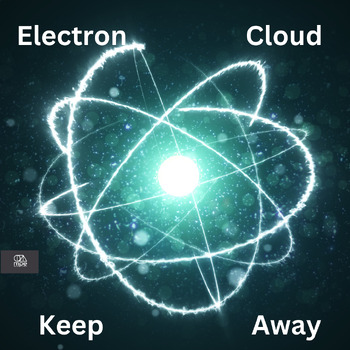
Electron Cloud Keep Away
This lesson is used as an introduction to quantum physics by explaining how weneed to think of an electron in reality. The students typically use the Bohr model and the electron board material in class, and this is very helpful in understanding energy levels and how atoms bond with each other. However, students can misinterpret the actual movement patterns of electrons and the false orbital shape of the energy levels in an atom. The students become accustomed to thinking of energy levels as conc
Subjects:
Grades:
4th - 7th
Types:

Science - Montessori Record Keeping
You can keep track of the child's progress in the area of science by using this Science Montessori Record Keeping.
Subjects:
Grades:
4th - 8th
Types:
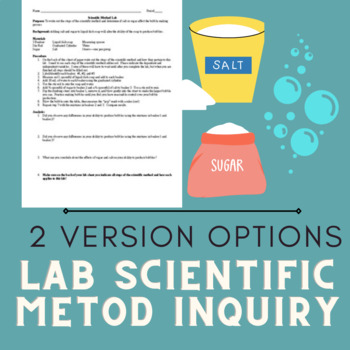
LAB Scientific Method Inquiry, Bubble Blowing - Engaging - 2 Different Versions!
This lab has students investigate what can form the biggest bubble using the scientific method - sugar or salt with regular water as a control. This can be edited to use any ingredients students wish to test as well! Simple and quick lab that has students thinking.Two Versions:1: Directions Provided 2: Design Your Own Experiment. I usually have a discussion on how to measure the bubbles and let the kids decide. (Blow the bubble on a table or paper & measure the pop!)Time: 45 minutesMaterials
Subjects:
Grades:
3rd - 12th
Types:
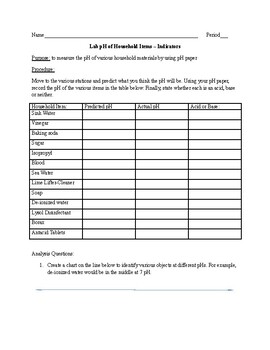
LAB - Chemistry - pH of Common Items - Acids and Bases
This lab has students determine the pH using pH paper of various household items. Anything you want can be substituted!materials:Sink WaterVinegarBaking sodaSugarIsopropylBloodSea WaterLime Lifter-CleanerSoapDe-ionized waterLysol DisinfectantBoraxAntacid Tablets
Subjects:
Grades:
5th - 11th
Types:
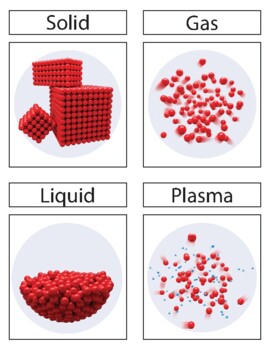
Phases of Matter 3-part cards
These are cards inspired by the Montessori 3-part cards. The four phases of matter covered are: solid, liquid, gas and plasma. For each set there are a matching set to print and cut out and a control set that can also be printed. The 3 sets are:- Pictures: for the younger learners, ESL, and/or to encourage questions. - Atomic structure models: to see at the atomic level what is happening in each phase. - Information: A summary of the main ideas to know when starting to study these concepts, as w
Subjects:
Grades:
4th - 12th
Types:

The Origin of the Solar System Elements
I love teaching the periodic table and elements, and one of the most interesting periodic tables I have ever seen is called The Origin of the Solar System Elements. Jennifer Johnson created this periodic table with some images from NASA. It does an excellent job of categorizing where different elements came from Big Bang fusion, cosmic ray fission, merging neutron stars, exploding massive stars, dying low-mass stars, and exploding white dwarf stars. The first two elements came from the Big Bang,
Subjects:
Grades:
4th - 7th
Types:

Density Displacement Lab-Metal Cylinders
In this lab you will use water placement and mass to calculate the density of an unknown metal cylinder. The easiest set to get is from Flinn Scientific and contains the 4 cylinders that are being tested. I used this assignment as a summative to reinforce concepts learned throughout the unit. This can be done with partners and requires minimal lab materials.
Subjects:
Grades:
7th - 12th
Types:
Showing 1-24 of 35 results




